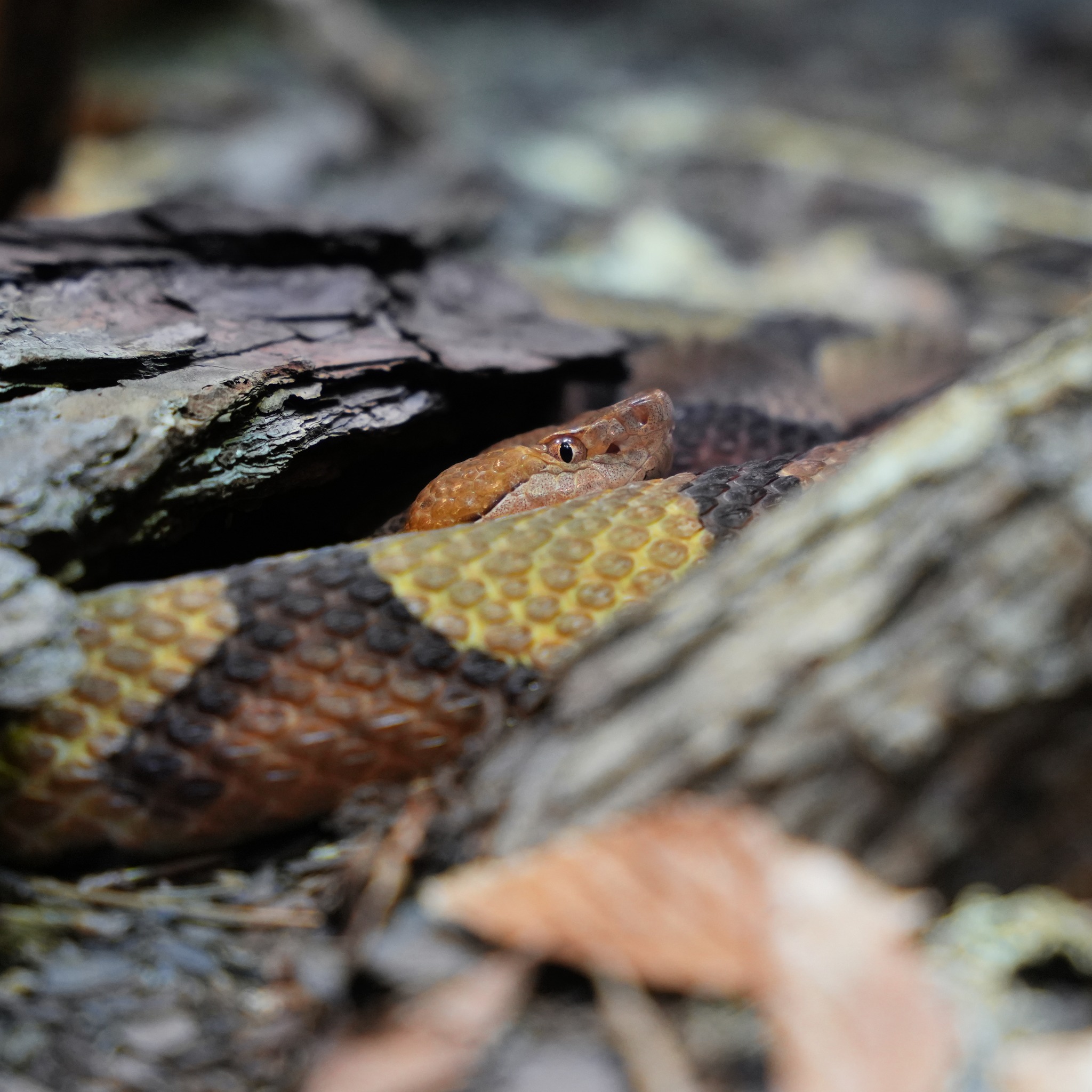- The concept of brumation and how it differs from hibernation.
- The biological mechanisms that enable reptiles to survive through brumation.
- The timing and environmental triggers of brumation in the Southeast.
- The significance of brumation in reptile conservation and zoo management.
- Opportunities for public education and engagement through observing brumation in controlled environments like aquariums.
Brumation represents a fascinating physiological adaptation that allows reptiles to survive the harsh conditions of winter. To comprehend the depth of this process, it’s essential to distinguish it from the more commonly known phenomenon of hibernation. While both processes are forms of dormancy, they have distinct differences worthy of exploration.
Reptiles undergo brumation, a state of dormancy where their metabolic processes slow significantly. Unlike mammals in hibernation, reptiles do not enter a complete sleep-like state. Instead, they remain alert and exhibit sporadic activity throughout the period. For instance, during warmer winter days, reptiles may surface to bask in the sun or hydrate themselves. These brief active phases are absent in hibernating mammals, thereby setting brumation apart as a unique survival strategy.
A key aspect of brumation is its biological basis. Reptiles are ectothermic, relying on external sources to regulate their body temperature. This characteristic ties their activity levels closely to environmental conditions. As temperatures drop, so does the metabolic rate of reptiles, effectively placing them in a suspended state of low-energy existence. This adaptation is critical, allowing them to minimize energy expenditure during periods when food resources are scarce. Biologically, the ability to slow down bodily functions is underpinned by hormonal changes that allow reptiles to conserve energy efficiently.
Environmental cues play a pivotal role in the onset and conclusion of brumation. In the Southeast United States, reptiles typically enter brumation between November and February. The precise timing is influenced by changes in daylight duration and ambient temperature. As days become longer and temperatures begin to rise at the approach of spring, reptiles can detect these subtle shifts. Their biological clocks are finely tuned to these changes, signaling the end of brumation and the resumption of regular activity patterns.
The concept of brumation carries significant implications for reptile conservation and zoo management practices. Understanding the natural cycles of reptiles helps in creating environments that authentically replicate their habitats, thus promoting health and longevity in captivity. This knowledge is integral to implementing seasonal care routines that align with the natural rhythms of these animals, ensuring that their transition into and out of dormancy is smooth and stress-free.
Aquariums and zoos offer a unique opportunity for public education and engagement with this intriguing aspect of reptile biology. Visitors are often fascinated by the resilience and adaptability of reptiles that can endure extreme weather conditions through such efficient mechanisms. Encounters with animals like alligators, snakes, and turtles during their brumation phase provide a tangible connection to the topic, sparking curiosity and fostering a deeper appreciation for wildlife conservation efforts.
By observing reptiles in controlled environments, the public can gain insights into how different species cope with environmental challenges. These settings serve as platforms to educate visitors about the broader implications of climate change on reptile behavior and ecosystems. Educational programs can highlight the interconnectedness between reptiles’ survival strategies and broader ecological health, encouraging a more informed and engaged approach to environmental stewardship.
In sum, brumation represents a remarkable strategy utilized by reptiles to navigate the challenges of winter. Its distinct biological and environmental intricacies make it a topic rich with educational value. By shedding light on this process, zoos and aquariums play a crucial role in both conserving biodiversity and informing the public, ultimately nurturing a greater sense of responsibility for our planet’s diverse inhabitants. Through strategic use of technology and storytelling, these institutions have the potential to deepen public understanding of brumation and inspire actionable conservation efforts.
*****
Source Description
This is not your average cold BRU 🤔 Does this week’s wintry weather have you considering taking up hibernation? 🥶 You may be familiar with this state of dormancy that some mammals (like bears) use as a process to survive intense winter months… but have you heard of *brumation*?
☕️ What exactly is BRUing over the winter?
Reptiles, including snakes, alligators and turtles, can go through brumation, typically in mud burrows, during periods of very cold temperatures.
😴 What’s different about this BRU?
Unlike in hibernation, reptiles in brumation have periods of activity where they eat, drink, dig new mud burrows or even sun themselves on warmer days!
📆 How long does it take to BRU?
In the Southeast, brumation typically occurs from November–February.
⏰ When will this BRU finally wake you up?
Reptiles can sense when ambient temperatures begin to rise and the days grow longer, signaling their “internal biological clock” that it’s time to be active again for spring!
BRU-ing with excitement to learn more about resilient reptiles? 🐊 Visit the Aquarium to see them up close — you might even get to meet one!


